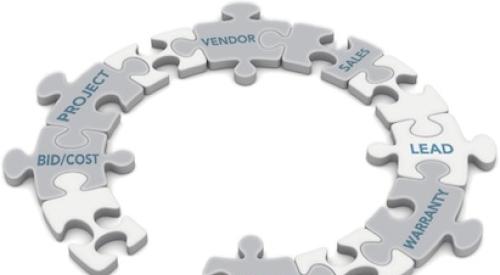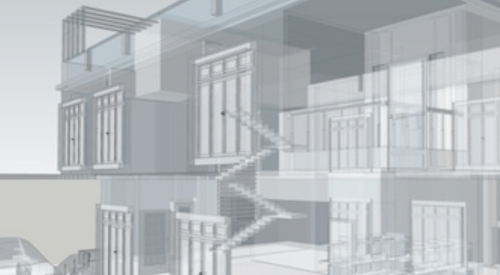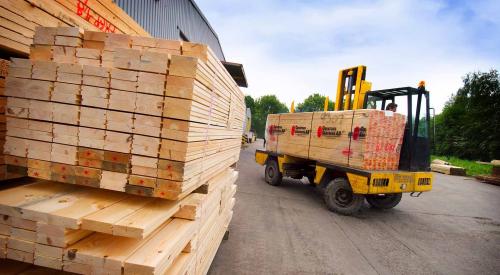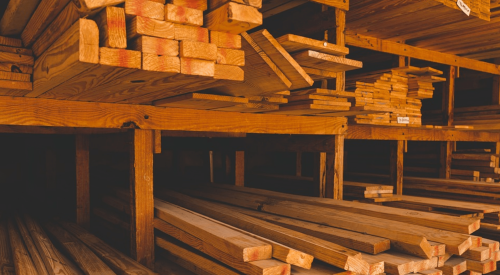The manufacturers of products that go into the homes you build often offer incentives to encourage builders to specify and use their products. These incentives are presented to the builder in the form of rebates or money paid after the products have been installed.
This process mystifies some builders. They want to know why they just don’t get the best price for these products up front in the initial purchase price. Surprisingly, some builders think they do.
Any builder that is not participating in anywhere from 20 to 40 rebate programs at any given time is probably leaving money on the table — money that can go straight to the bottom line. You put products in your homes anyway. Why not get paid to be specific about the products that go into your homes and the products your subcontractors use?
Why manufacturers use rebate programs
Home builders buy products from manufacturers through various channels. Each channel can have a rebate opportunity. I will explain why later.
- Direct. This might be for a category like appliances. Companies like GE and Whirlpool will enter into a direct-sale relationship with builders.
- One-step distribution. This might be for a category like HVAC. In this case, an HVAC contractor might buy directly from a manufacturer, such as Lennox. The HVAC contractor then sells the product to the builder.
- Two-step distribution. This might be for a category like plumbing fixtures. Companies like Delta and Moen will sell to a plumbing distributor, such as Ferguson, which, in turn, sells to a plumber who then sells to a builder.
Let’s look at the first category — direct. Why would a company like GE offer rebates to a builder instead of simply lowering the up-front price to begin with? There are at least two reasons why this may be the case. First, GE might set an up-front price with a builder based on the expected volume and product mix the builder has used in the past and is expected to use in the future. However, because future volumes are never a guarantee, GE will hold back some money from the up-front price and will instead create a volume-based rebate to provide a greater discount in the form of a rebate for actual volume sold versus projected volume.
Second, GE might not want to alter its street prices for appliances. Too many people would know the prices for their appliances. Personnel who move from one builder to another would expect the same pricing. So, since rebate values are known to only a few, GE can provide back-end rebates to reward the builder for volume without affecting its known street pricing.
Now let’s take a look at the second and third categories — one- and two-step distribution. Suppose Moen wanted to entice a builder to use only its products, but the builder doesn’t buy products directly from manufacturers. Moen would reward the builder for specifying to its plumbers that only Moen products are used. In exchange, the builder receives a direct rebate for those purchases.
Why can’t Moen simply lower the up-front price paid by the plumber for purchases made on behalf of a specific builder? Because it is impossible to do. Moen sells to a distributor, which, in turn, sells to a plumber who buys for many different builders. No systems exist that would allow Moen-specific pricing to the distributor and then to a specific plumber to purchase product at a lower price for any one builder. This cannot be done. Thus, the only way for a manufacturer to reward a builder for the exclusive use of their product is in the form of a rebate paid directly to the builder.
Rebates exist because manufacturers want to reward builders for using their products exclusively or nearly exclusively, and they are willing to pay for this action. Does it pay off for them? Yes, in more ways than one:
1. Rebate programs drive market share and changes to market share. Assume that street pricing for paint is the same for Sherwin-Williams and Kwal. The market would make this so for comparable products. The rebate can be the cost difference that will cause a builder to tell its trades to use one product over another. This can be done selectively so that a rebate program is only offered to builders that a manufacturer values based either on their size or reputation. Simply lowering the up-front street price of their products would cause the competition to eventually do the same and would provide the same discount to all builders, and no switching would occur.
2. Rebate programs drive exclusivity and near exclusivity. Exclusivity matters to manufacturers. It helps to build their brands when home buyers see that a builder is using their products exclusively.
3. Exclusivity and brand presence in new homes builds aftermarket sales. Aftermarket sales can be worth almost as much if not more than the original sale itself. In the case of paint, when it comes time to repaint a home, the homeowner will often set out to use the same paint that was in the house originally. In the case of HVAC, the homeowner will tend to use the same brand when replacing a system or a part years later. Manufacturers that did not have their brands specified in the new houses from the start will most likely miss out on these opportunities.
Where to start?
First, look at the rebate programs you already participate in and the kind of deal values you’re getting per home and in total. Make sure you are actually getting the checks.
Manufacturers know that builders will sign up for a rebate program and instruct their people and subcontractors to use particular products, but then don’t report their closings and sales or don’t collect their money. It is one thing to commit to the program; it is quite another to be sure you have been paid.
Once you have your list and know you have been paid, compare your list to a list of available rebates. Companies like Builder Sourcing can help (www.buildersourcing.com/services/rebate-program-management).
Rebate programs are available for more than 50 product categories. Participation in these programs will not cause any builder to sacrifice quality or pay more in up-front costs. You can expect to collect anywhere from $400 to $2,000 or more per house, depending on the size and levels of the product being built. Multi-family housing generally returns less cash; single-family houses generally return more.
Finding, evaluating, and administering these programs can be an extremely labor-intensive effort. In addition, in rebate values, size does matter. National builders receive more money then smaller builders.
How can a rebate program management service or buying group help?
A rebate management service will benchmark your current manufacturer rebate and incentive programs, provide an estimate of the best programs available in a given category, and help you achieve those levels. They can work with your current suppliers, new suppliers, or suppliers with whom they have established a national builder-level relationship based on the aggregate size of their builder group.
Builders benefit from working with specialists who have experience in negotiating rebate and incentive programs and work with a group of builders to bring their collective size to the table, which is useful when negotiating national builder-level programs. Unfortunately, there is no book you can buy that will list all the programs available by category and size of builder.
The goal is to increase the dollars per home collected from rebate programs while lowering the cost of participation and administration of these programs.
Builders must answer the following questions:
- What are the dollars per home currently being collected?
- What is the maximum dollars available and how much money is being left on the table?
- What is the action plan to improve results?
- What systems and reports exist to help us achieve these results?
It is only with the answers to these questions that results can be improved.
In our experience working with hundreds of builders over the years, we have increased the money our builders receive from their programs by as much as four times their initial levels. We have also significantly reduced the amount of time and effort required to participate in and collect money from these programs.
If you would like us to help you determine the potential savings in maximizing the value received from your rebate and incentive programs, send an email to info@buildersourcing.com. We will contact you to begin a free assessment process.
Charles Schneider is the founder and CEO of Builder Sourcing Corporation, a professional services firm that works with home builders to improve their results in purchasing and the use of advanced builder management systems.













